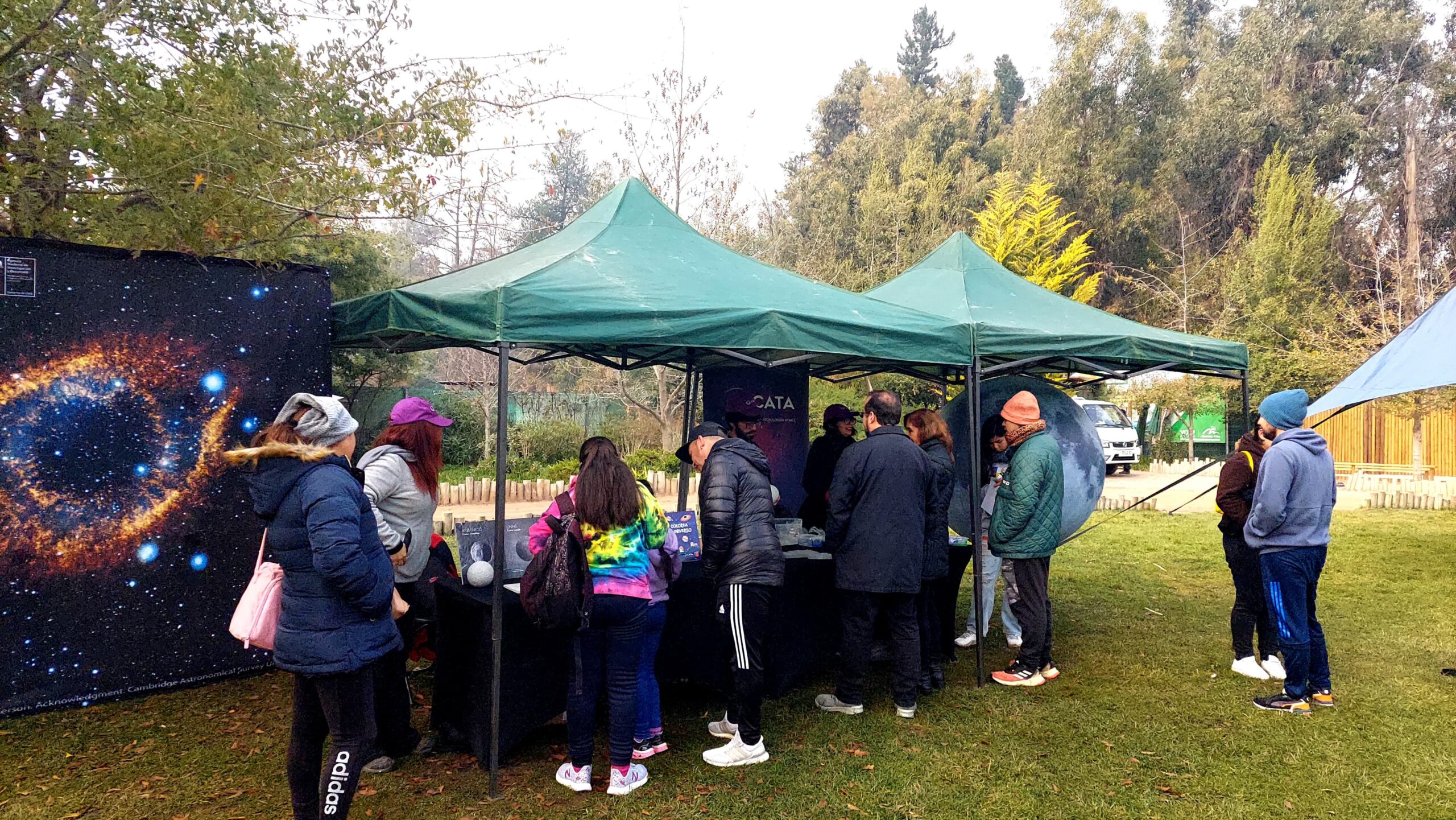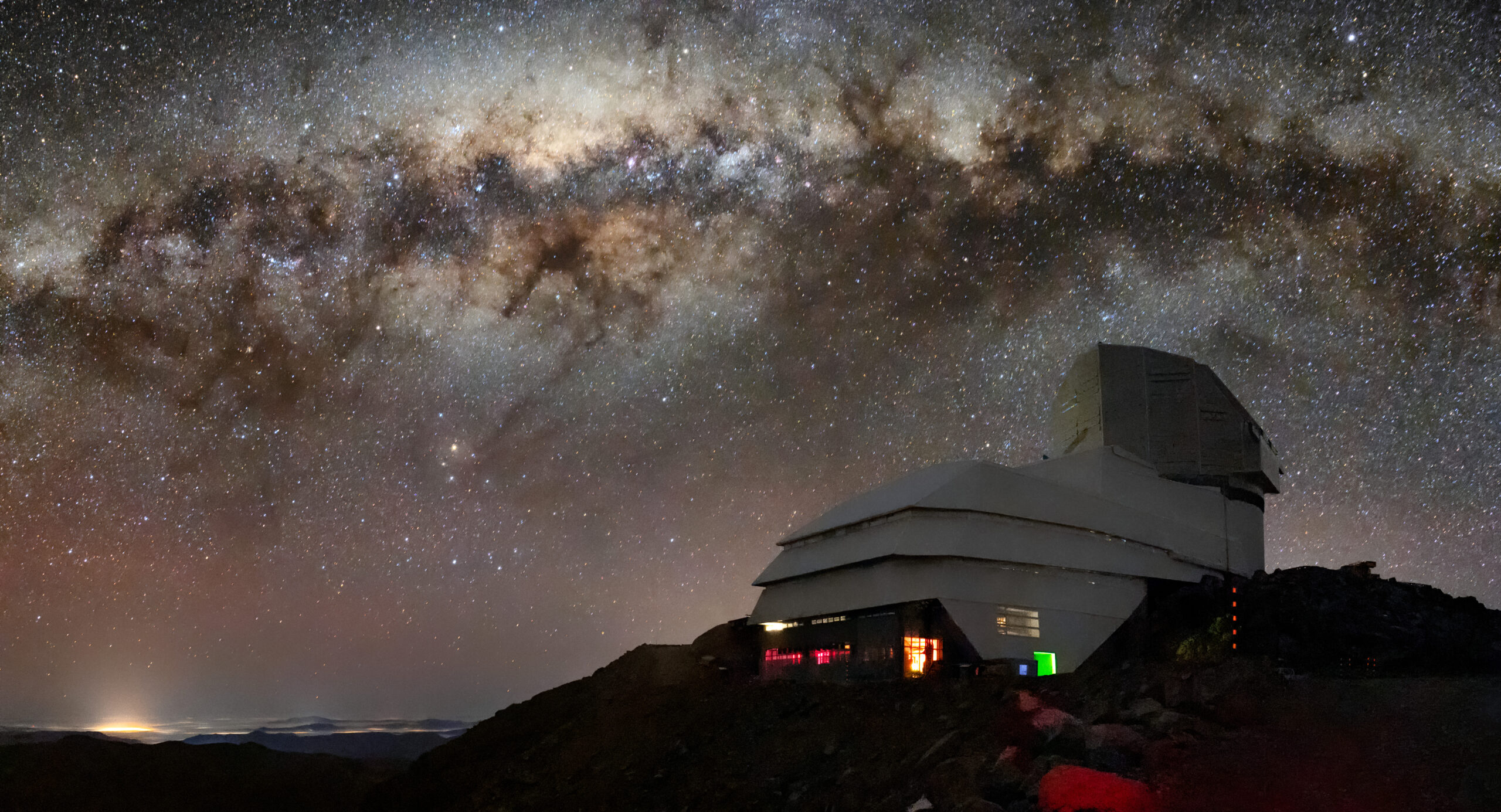
Astronomers discover Young Exoplanet similar to Neptune
Scientists from the Universidad de Chile and Universidad Diego Portales, as well as from the CATA Astrophysics Center made the discovery, which was published in the latest edition of Monthly Notices of the Royal Astronomical Society.
A planet smaller than Neptune, very dense and massive, orbiting a young star located 125 light-years away, is the discovery of this team of astronomers.
“This planet is located at the edge of the Neptunian desert (very close to its star, where no planets of this size can exist), and is the youngest in this regime, which makes it an essential discovery,” explains José Vinés, PhD student in Astronomy at the University of Chile and first author of the paper.
With an age of 300 million years, and located in the system HD 18599, this world is a surprising discovery. “The discoveries of young planets are fundamental to understand the processes of evolution and are very rare,” adds Vinés.
The beginnings of the research started in 2010 when the first data were taken by the WASP (Wide Angle Search for Planets) instrument, located in South Africa, in a planetary search campaign. “Although they did not find the planet candidate, these observations were important to determine the rotation period of the star,” explains Vinés. Radial velocity observations were subsequently made with HARPS (High Accuracy Radial Velocity Planet Searcher) at ESO’s La Silla observatory in northern Chile, starting in 2014.
Data from the Transiting Exoplanet Survey Satellite (TESS) made it possible to detect the transit of this object. A decisive follow-up was thus initiated, essential to confirm the object and measure its mass. James Jenkins, UDP astronomer and CATA researcher, said: “Young stars present problems for the discovery and characterization of small planets, as they are very active bodies. This adds noise to our measurements, confusing the algorithms we use for their discovery”.
But it would not be until 2018 when Chilean astronomers began their research using MINERVA (Miniature Exoplanet Radial Velocity Array) which is located at Mount Kent Observatory in Australia. “I made observations of radial velocities with FEROS (Fiber-fed Extended Range Optical Spectrograph, from La Silla Observatory),” says Vinés, who adds that “the next step will be to learn more about the characteristics of the planet, what the composition of its atmosphere would be like.”
With these data the team found this “unusual planet”. The paper was co-written by José Vinés and James Jenkins, CATA researcher and from the Astronomy Nucleus of the UDP. Other collaborators were: Zaira Berdiñas, who contributed while doing her postdoc in astronomy at the University of Chile; Maritza Soto from Queen Mary University of London; Matías Díaz, Ph.D. in Astronomy from the University of Chile and researcher at Las Campanas Observatory; Douglas Alves from the University of Chile; and Pablo Peña from Diego Portales University.
The name of the research is “A dense mini-Neptune orbiting the bright young star HD 18599” and appeared in the last edition of the journal Monthly Notices of the Royal Astronomical Society. Link to the publication.
The CATA Astrophysics Center is funded by the National Agency for Research and Development ANID.
Recent news
-
 Publicado el: 04/07/2025CATA researchers among the best in Chile according to international ranking Research.com
Publicado el: 04/07/2025CATA researchers among the best in Chile according to international ranking Research.com -
 Publicado el: 30/06/2025CATA Director strengthens ties in her second institutional tour
Publicado el: 30/06/2025CATA Director strengthens ties in her second institutional tour -
 Publicado el: 30/06/2025CATA celebrated Asteroid Day 2025 at the Pueblito de Las Vizcachas Park
Publicado el: 30/06/2025CATA celebrated Asteroid Day 2025 at the Pueblito de Las Vizcachas Park -
 Publicado el: 26/06/2025Vera C. Rubin: the telescope that watches the sky and anticipates the future of astronomy
Publicado el: 26/06/2025Vera C. Rubin: the telescope that watches the sky and anticipates the future of astronomy -
 Publicado el: 25/06/2025CATA researchers appointed as Full Professors at Universidad Andrés Bello
Publicado el: 25/06/2025CATA researchers appointed as Full Professors at Universidad Andrés Bello
Categories list
- Acknowledgments 19
- Astrobiology 5
- AstroCluster 1
- Black holes 13
- Corporativo 49
- Cosmology 4
- Descubrimientos 19
- Disclosure 46
- Exoplanets 13
- Extension 4
- Galaxies 17
- Galaxies formation 2
- Inter y Transdisciplina 2
- Local Universe 13
- Publications 5
- Sin categorizar 31
- Solar System 11
- Stellar formation 6
- Technology 9
- Technology Transfer 12

